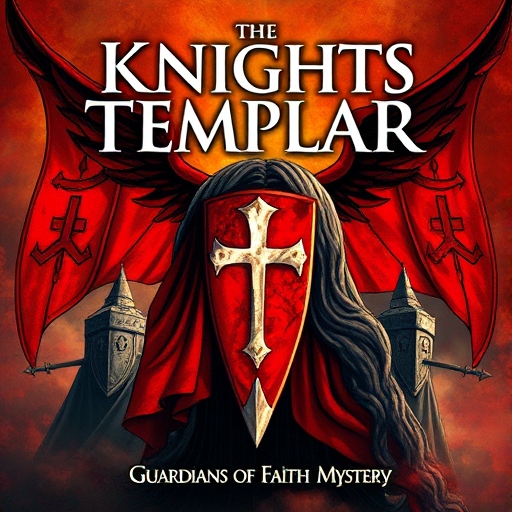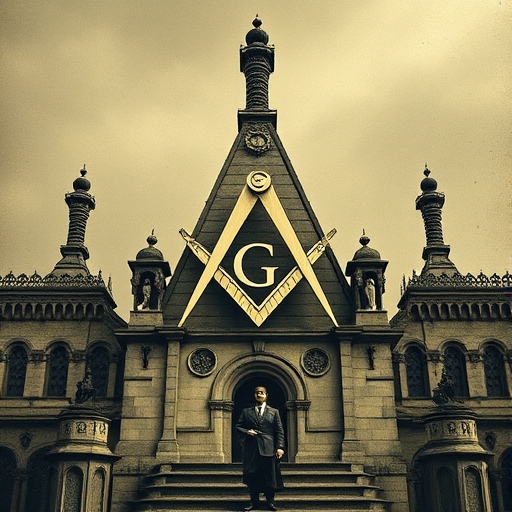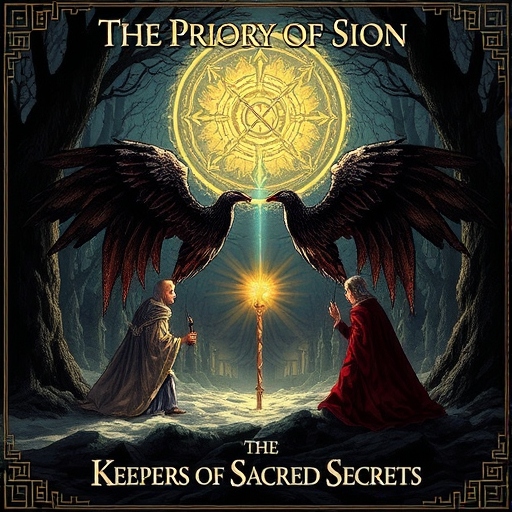
Occult Organizations the Hidden societies, ancient orders, and groups steeped in mysticism have long captivated human imagination. These secretive organizations, often tied to esoteric beliefs and secret rituals, are believed to wield significant influence over world events, shaping history from the shadows. While some groups are well-documented, others remain shrouded in mystery, their true purpose and influence open to speculation. Here, we explore five of the most enigmatic groups that have impacted history and continue to intrigue the modern world.
1. The Freemasons: Architects of Secrecy and Influence
The Freemasons in Occult Organizations, one of the most widely recognized secret societies, are renowned for their elaborate symbolism and profound historical influence. Originating from medieval stonemason guilds, the Freemasons evolved into a global fraternal organization focused on personal development, morality, and the pursuit of knowledge.

Key Beliefs and Practices
- Symbolism and Allegory: Freemasons in Occult Organizations use tools of the stonemason trade, such as the compass and square, as metaphors for ethical principles and personal growth.
- Secret Rituals: Initiation ceremonies and meetings in Occult Organizationsare conducted behind closed doors, with members sworn to secrecy about the inner workings of the order.
- Esoteric Teachings: Freemasons study ancient wisdom, blending elements of mysticism with practical philosophy.
Historical Influence
Freemasons in Occult Organizations have played a role in shaping key historical events and cultural movements:
- Political Movements: Prominent Freemasons in Occult Organizations, including George Washington, Benjamin Franklin, and Voltaire, contributed to revolutions that reshaped nations, such as the American and French revolutions.
- Cultural Contributions: Freemasonry’s symbolism has influenced art, literature, and architecture, leaving its mark on buildings and monuments worldwide.
While Freemasons emphasize charity and self-improvement, critics have often accused the group of wielding hidden power and pursuing hidden agendas behind closed doors.
2. The Rosicrucians: Mystics of the Enlightenment
The Rosicrucians in Occult Organizations are a legendary secret society that emerged in Europe during the early 17th century. They are best known for their focus on mysticism, spiritual enlightenment, and the synthesis of science and metaphysics.
Origins and Beliefs
- Esoteric Beliefs: Rosicrucians claim to possess secret knowledge of the universe, drawn from alchemy, astrology, and Hermeticism.
- The Rosicrucian Manifestos: Documents such as The Fama Fraternitatis proclaimed the existence of a secret brotherhood devoted to the betterment of humanity through hidden wisdom.
- Invisible College: Rosicrucians in Occult Organizations believe in the existence of an unseen group of enlightened individuals working to guide humanity’s evolution.
Historical Impact
Rosicrucian philosophy played a significant role during the Renaissance and the Enlightenment:
- Scientific Influence: The group inspired early scientists like Johannes Kepler and Isaac Newton, blending empirical inquiry with metaphysical speculation.
- Cultural Movements: Their ideas contributed to the rise of Freemasonry and other esoteric traditions, shaping the intellectual landscape of Europe.
Though their true existence is debated, the Rosicrucians remain symbols of the search for hidden truths and the intersection of spirituality and science.
3. The Knights Templar: Guardians of Faith and Mystery
The Knights Templar in Occult Organizations, established in 1119, began as a military order tasked with protecting Christian pilgrims traveling to the Holy Land. Over time, they grew into a powerful and wealthy organization, inspiring both reverence and suspicion.

Legacy of the Templars
- Esoteric Beliefs: The Templars are rumored to have uncovered sacred relics, such as the Holy Grail and the Ark of the Covenant, during their time in Jerusalem.
- Financial Pioneers: They created an early banking system, allowing pilgrims to deposit funds in Europe and withdraw them in the Middle East.
- Secret Rituals: Allegations of heretical practices and mysterious ceremonies led to their persecution by the Catholic Church.
Dramatic Fall and Enduring Myths
In 1307, King Philip IV of France, heavily indebted to the Templars, orchestrated their arrest and dissolution. Many members were tortured and executed, but rumors persist that the Templars went underground, preserving their wealth and secrets.
The Knights Templar in Occult Organizations have become icons of mystery, with their story inspiring countless books, films, and conspiracy theories about their supposed influence on modern secret societies and hidden agendas.
4. The Hermetic Order of the Golden Dawn: A Modern Occult Movement
Founded in 1888 in London, the Hermetic Order of the Golden Dawn is a relatively modern ancient order that brought mystical practices into the mainstream of Western culture. Drawing on Egyptian, Kabbalistic, and Greco-Roman traditions, the Golden Dawn sought to unlock spiritual and magical potential in its members.
Beliefs and Practices
- Mysticism and Magic: Members studied and practiced ceremonial magic, divination, and meditation to achieve personal transformation.
- Astrology and Tarot: The Golden Dawn popularized tarot cards and astrology as tools for self-discovery and spiritual insight.
- Hierarchical Structure: Members advanced through ranks, learning increasingly complex rituals and esoteric teachings.
Influence on Culture
- Artistic and Literary Figures: Members like W.B. Yeats and Aleister Crowley brought elements in Occult Organizations of the Golden Dawn’s philosophy into their works, influencing modern occultism and creative movements.
- Occult Revival: The order’s teachings inspired the rise of contemporary mystical organizations and practices, from Wicca to modern ceremonial magic.
Although the Golden Dawn fragmented in the early 20th century, its legacy endures as a cornerstone of Western esotericism.
5. The Priory of Sion: Keepers of Sacred Secrets
The Priory of Sion gained global attention in the late 20th century as a shadowy organization allegedly dedicated to protecting religious secrets. Its origins are steeped in mystery, with some claiming it was founded in 1099 during the First Crusade, while others dismiss it as a modern fabrication.

Alleged Mission
- Sacred Lineage: The Priory is said to protect the descendants of Jesus Christ and Mary Magdalene, preserving their bloodline as a secret.
- Esoteric Beliefs: Members are believed to hold hidden knowledge about early Christianity, including suppressed truths about the origins of the Church.
- Connection to the Templars: The Priory is often linked to the Knights Templar, suggesting a shared mission of safeguarding divine mysteries.
Modern Controversy
The Priory gained widespread attention through books like Holy Blood, Holy Grail and Dan Brown’s The Da Vinci Code. However, many historians argue that the Priory’s existence was fabricated by Pierre Plantard in the 20th century as part of an elaborate hoax.
Despite doubts about its authenticity, the Priory of Sion remains a potent symbol of the intersection between faith, history, and mystery.
The Impact of Hidden Societies on History
These hidden societies and their secret rituals have captured the imagination of generations, blending fact, myth, and speculation. Whether their influence is real or exaggerated, their stories remind us of the power of secrecy, symbolism, and shared beliefs in shaping history.
Why They Fascinate Us
- Esoteric Beliefs: The blending of spirituality, mysticism, and science creates a sense of wonder.
- Power and Influence: Their rumored control over major events fuels both fear and curiosity.
- Cultural Legacy: These groups inspire literature, art, and media, shaping how we perceive history and the unknown.
While the truth about these groups may remain elusive, their legacy as mysterious forces shaping history continues to captivate the world.
If you want to read more : CLICH HERE
